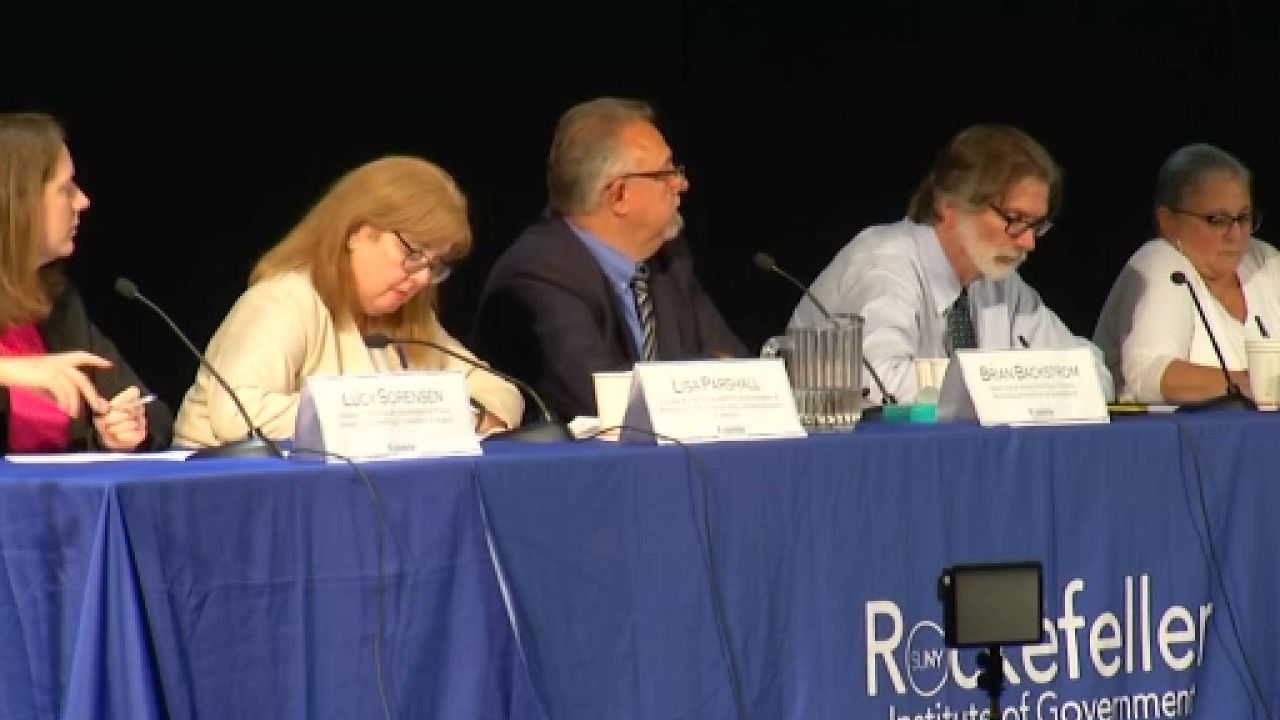The final of five public hearings to study changing the state's school aid formula was held in Albany County on Wednesday — a glimpse of what's to come with one of the biggest battles of next year's legislative session.
Education leaders want to update the 17-year-old Foundation Aid formula, but not the way Gov. Kathy Hochul wanted to do it.
In January, the governor dropped a big surprise on New York school districts with changes to the key formula that funds school aid in her executive budget proposal. After pushback from districts — especially rural schools — Hochul compromised, and tasked SUNY's Rockefeller Institute of Government to issue recommendations to revise the formula by Dec. 1 to shape next year's school aid fight.
The hearings, held around the state over the last month, revealed themes in what must be changed about New York's Foundation Aid formula: The regional cost index has never been updated, and the state continues to use poverty data from the 2000 U.S. Census.
Speakers at Guilderland High School on Wednesday told panelists schools need more predictability in funding.
Bob Lowry of the New York State Council for School Superintendents has worked on school funding issues for decades. He's recommended a series of guiding principles for the Rockefeller Institute to use to review the formula.
But with less than four months until the institute's final report is finalized, Lowry said some of the formula changes can be done more quickly, while others will need more time and money to research.
"Any one change can have dramatic effects for a group of districts," Lowry told Spectrum News 1 after Wednesday's hearing. "If we try to do everything right now, we might foreclose on the opportunity to make some of those better changes that we could do if we took more time."
Lowry is not a proponent of ending the formula's “hold harmless” provision, which prevents an annual decrease in a district’s Foundation Aid regardless of student enrollment decline.
But nonpartisan budget watchdog group, the Citizens Budget Commission, supports Hochul's original proposal to phase out "hold harmless" over time. The CBC testified Wednesday among a host of education officials.
After testimony, CBC Director of State Studies Patrick Orecki noted education funding is one of the largest pieces of the state's $237 billion budget, with $20 billion for Foundation Aid alone. The budget also contains more than $10 billion in other education funding, including the School Tax Relief, or STAR, program and High Tax aid.
The CBC wants the full package expense-based aid programs to be folded into the formula, and for the state to look at district's capacity to contribute.
"Right now, frankly, the formulas don't do a great job of fully taking into account what local districts can contribute for these costs," Orecki said. "So some improvements to the formula, not only Foundation Aid, but everything else, could better target aid based on need."
Orecki has argued for years that New York, which spends more money per pupil than any other state in the nation, must target its education spending more wisely.
United Federation of Teachers President Michael Mulgrew, the head of New York City's teachers' union, said he hopes state leaders can work together with education stakeholders and not play politics in changing the formula.
In addition to updates, he said the law must be strengthened to ensure school districts spend state funding where it's intended to go.
"We hear there are provisions in the law by (the State Education Department), and by the comptroller, but we really have never seen anyone dig into that aspect of it," Mulgrew said. "We, ourselves, have had massive fights inside New York City over the fact that Foundation Aid is not being used properly."
The public can submit written comments and feedback to the Rockefeller Institute of Government as part of its ongoing research about Foundation Aid through Sept. 6 via the online form on the institute's website.



